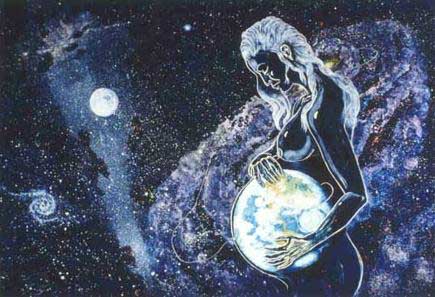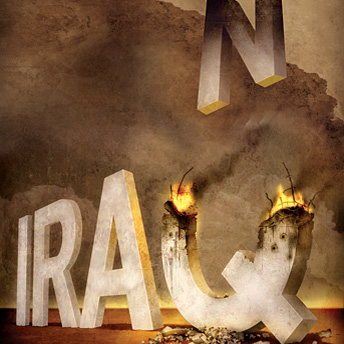By Stephanie Van Hook (distributed by Peace Voice 1.1.12)
Starting a revolution is like lighting a match; it risks becoming extinguished as quickly as it was lit. Sustaining a revolution, however, is like starting a fire, and ensuring that it has the fuel to burn as long as necessary. As an agent of change, I need that fire for as long as it takes for results to emerge, otherwise, I risk burn-out. How can we tell if our flame will prevail? We can know by checking our hearts: either we are burning with hatred and blame or with compassion and love.
Those who profess a commitment to what is called strategic nonviolence know how to start a revolution, that is, in the same way that one would have to fight if one is the weaker party: you do what you your opponent is trying to prevent you from doing, you cast all or most of the blame on them, and you draw upon the sympathies of the masses—the “reference public”– to express your power. In this approach it’s acceptable to use threat, humiliation, and coercion to get what you want, and you often accept short-term and short-lived “success” as your goal. Nonviolence in this approach is simply refraining from physical violence while one’s inner frustrations and pains continue to grow, or are left wholly unresolved. After lighting the match of revolution, a person using nonviolence by this definition can walk away from the responsibility to carrying it forward for the long run. So a people left their guns at home this round? Where will it get them when they decide to take them back out because a limited vision of nonviolence did not bring about the deep changes needed? Look at Egypt “post-revolution,” and Libya, for case by case examples.
If I truly cared about the people I want to serve, however, I take the whole human being, their entire humanity, into account. So, while certain individuals gained fame and recognition for their contributions to starting revolutions in 2011 for example, I wonder if that recognition was not premature, if not short-sighted: we should ask ourselves, is this kind of revolution going to last? Witnessing one too many “progressives” shouting their discontent at cheering, furious crowds, we need to step back: can hatred, blame and resentment continue to inspire a long-term struggle? I, for one, have never found this approach entirely inspiring, mature, or even entirely honest.
The revolution, as we often say at the Metta Center, is not about putting a different kind of person in power; it is about awakening a different kind of power in people. The kind of satisfaction that comes from hating another human being is nothing compared to the satisfaction that comes from transforming hatred into respect and consideration of the humanity of the other. The sense of security that comes from rejoicing in the death and misery of another human being is the absolute lowest form, and it is nothing compared to the joy of rejoicing in the happiness, and sharing in the sorrow, of other people. In South Africa during the Truth and Reconciliation Commission, they called this ‘Ubuntu,’ the concept that I affirm my humanity by affirming the humanity of others, or it is through other people that one is a person. In other words, one of the first ways of sustaining ourselves for revolution is by an awareness that I cannot do harm to another without harming myself. Peace psychologist Rachael MacNair has coined this truth in social science as ‘perpetration induced traumatic stress,’ or PITS. Yet just as I cannot harm another without harming myself, fortunately, I cannot truly benefit another without deeply experiencing that benefit in my own life. This is the point: if we want to create a society that takes humanity into consideration, the revolution will sustain itself when we learn how to do it ourselves, within ourselves. In the words of the great Burmese leader Aung San Suu Kyi:
“The quintessential revolution is that of the spirit, born of an intellectual conviction of the need for change in those mental attitudes and values which shape the course of a nation’s development. A revolution which aims merely at changing official policies and institutions with a view to an improvement in material conditions has little chance of genuine success.”

Don’t get me wrong—I am not suggesting that there is not an outward struggle to wage; there is. I am suggesting that how we wage the struggle matters, and thus how we define our nonviolence also matters. If we limit our definition to simply “not using (physical) violence,” we should be suspicious that such a reduction can lead to more violence down the road because it denies our humanity. Further, we should not feel insulted if our opponents fail to see us for something more than threatening masses who endanger their personal i.e., physical, well-being, provoking further violence and repression from them. But is this who we are? Are we out there to pick fights or to make lasting change? If we widen our view to encompass a higher image of who we are, nonviolence means channeling and transforming violent thoughts, refraining from violent insults and language, as well as not using the body as an instrument of harm but an instrument of peace. Not only do we have a strategy, but we have a higher vision of what is possible and who we are as people. That, to me, is revolutionary.
A way to begin affirming this deeper commitment is by turning our attention inward (e.g. by unplugging from the mass media, which are grabbing our attention outward). Inner awareness is a tool to understanding our thoughts and emotions. We can look at it on the personal scale as well as the collective, but let’s start with individuals. When anger, frustration and resentment arise, don’t immediately blame others or take it out on the person next to you, even if they did provoke you. Neuroscience shows that human beings will respond negatively to threats, whether real or imagined. Take a walk, get exercise and give yourself detachment from the visceral response (which studies show take about an hour to pass through before we can begin to calm down, but experience tells me that this can take days and weeks). Upon achieving detachment from the situation, if you realize that the threat is real and not imagined, make a strategy for solving the problem nonviolently and constructively. You are not repressing anger, you are simply harnessing it for its full effectiveness. Unharnessed anger is an unlocked gateway to violent behavior which never is a one time occurrence, it will happen again; when it is harnessed, you can look squarely at the problem and direct that energy directly to it and solve it permanently. As we often quote Martin Luther King referring to anger in the Civil Rights movement, “We did not cause outbursts of anger. We harnessed anger under discipline for maximum effect.” Included in this effect is a rerouting of the violent energy so it does not recur as such.
This turning inward is a turning away from our conditioned responses that we have developed over time to maintain some kind of order in our minds. It is time we moved away from cruelty and alienation, and refused to give it a place in our toolkits of revolution. We can challenge ourselves all day long, as a personal nonviolence training; every small victory in becoming kinder is fuel for the fire for the long-term struggle for freedom. It is much harder than strategic nonviolence, and realizes the true meaning of “civil” in “civil resistance.”
Sufi poet Jalaluddin Rumi reminds us, “Love is that fire which when kindled burns everything else away.”
After that revolution, what remains? It’s time we found out.

RETURN TO METTA’S HOMEPAGE










 Some (mostly Democrats) see it as an invasion of women’s privacy, if not technically a kind of rape, while others (mostly Republicans) say, with the conservative Family Research Council President Tony Perkins, “This law is a victory for women and their unborn children. We thank Gov. McDonnell and Virginia’s pro-life legislators for their work to ensure that women have all the facts and will no longer be kept in the dark about their pregnancies.”
Some (mostly Democrats) see it as an invasion of women’s privacy, if not technically a kind of rape, while others (mostly Republicans) say, with the conservative Family Research Council President Tony Perkins, “This law is a victory for women and their unborn children. We thank Gov. McDonnell and Virginia’s pro-life legislators for their work to ensure that women have all the facts and will no longer be kept in the dark about their pregnancies.”




